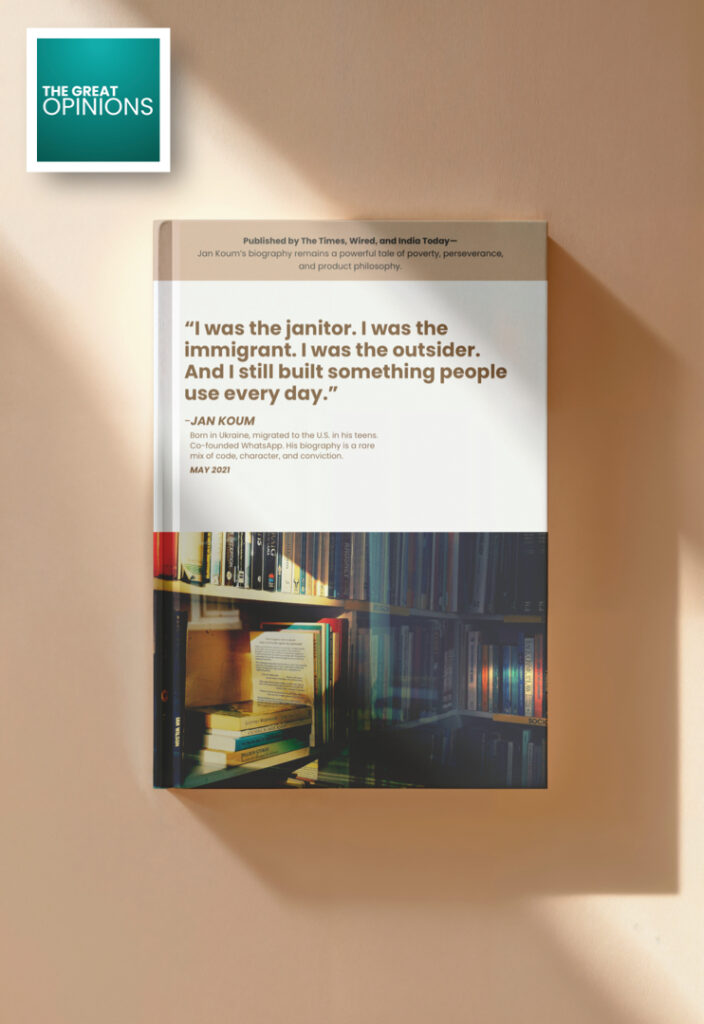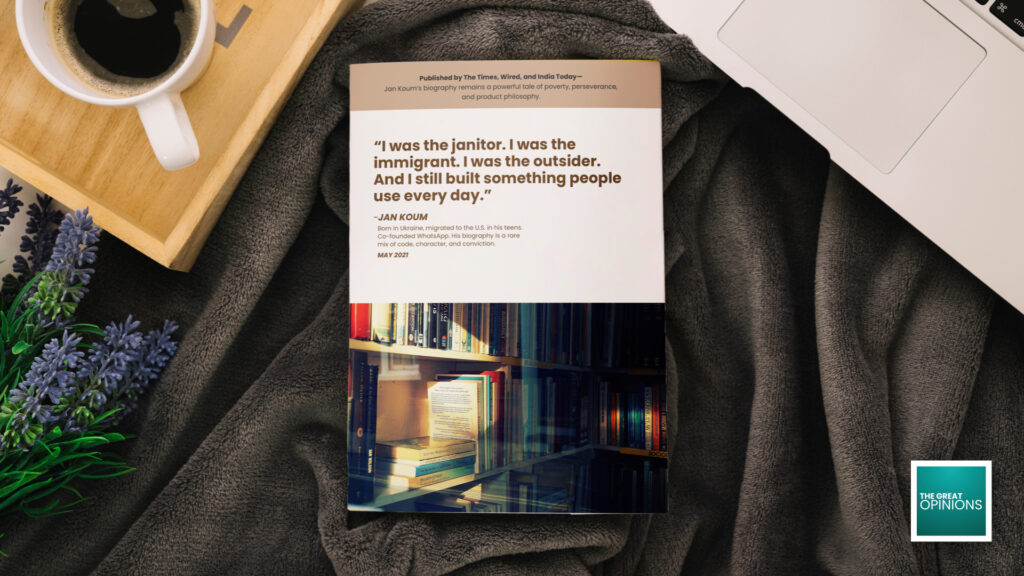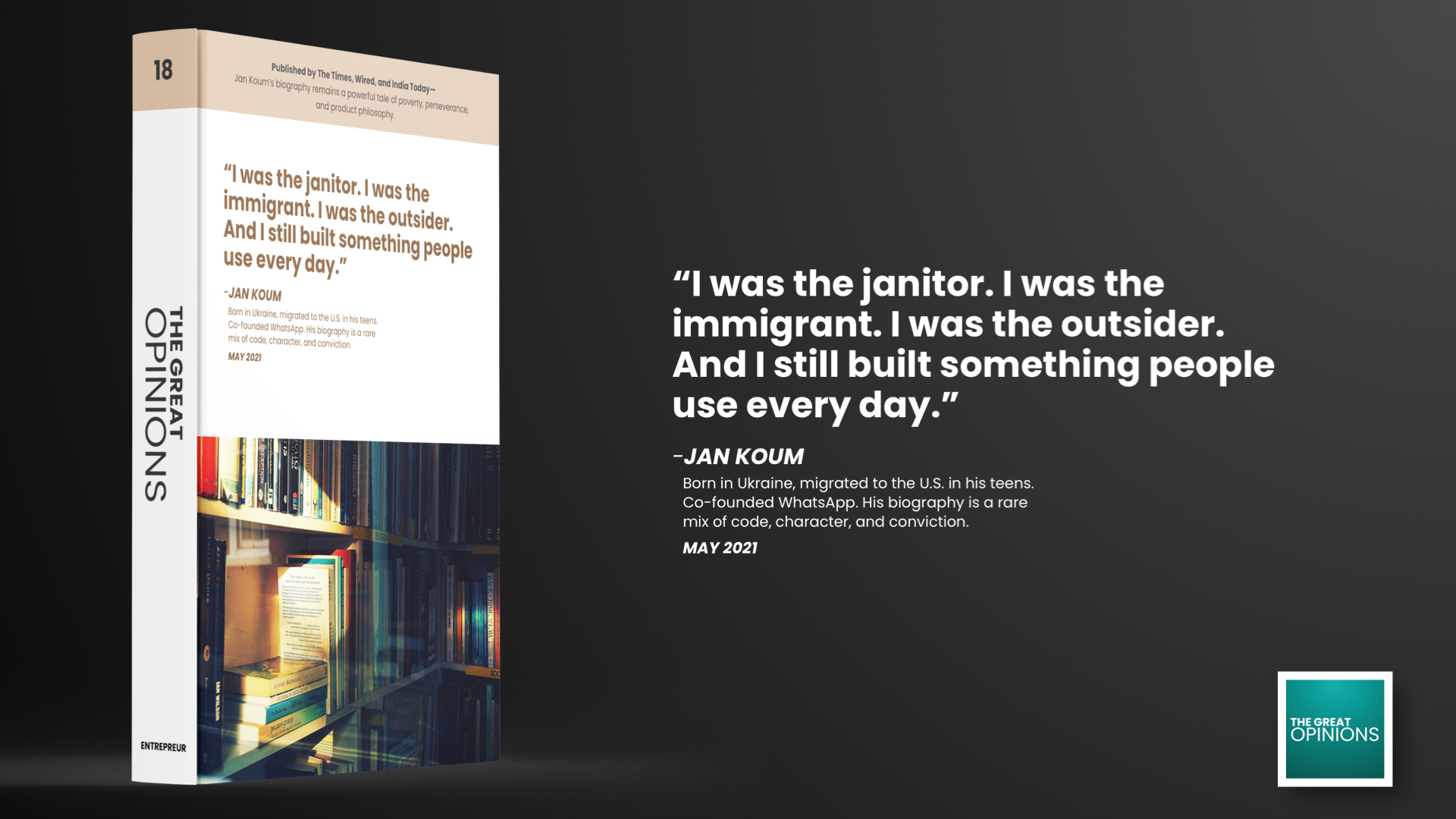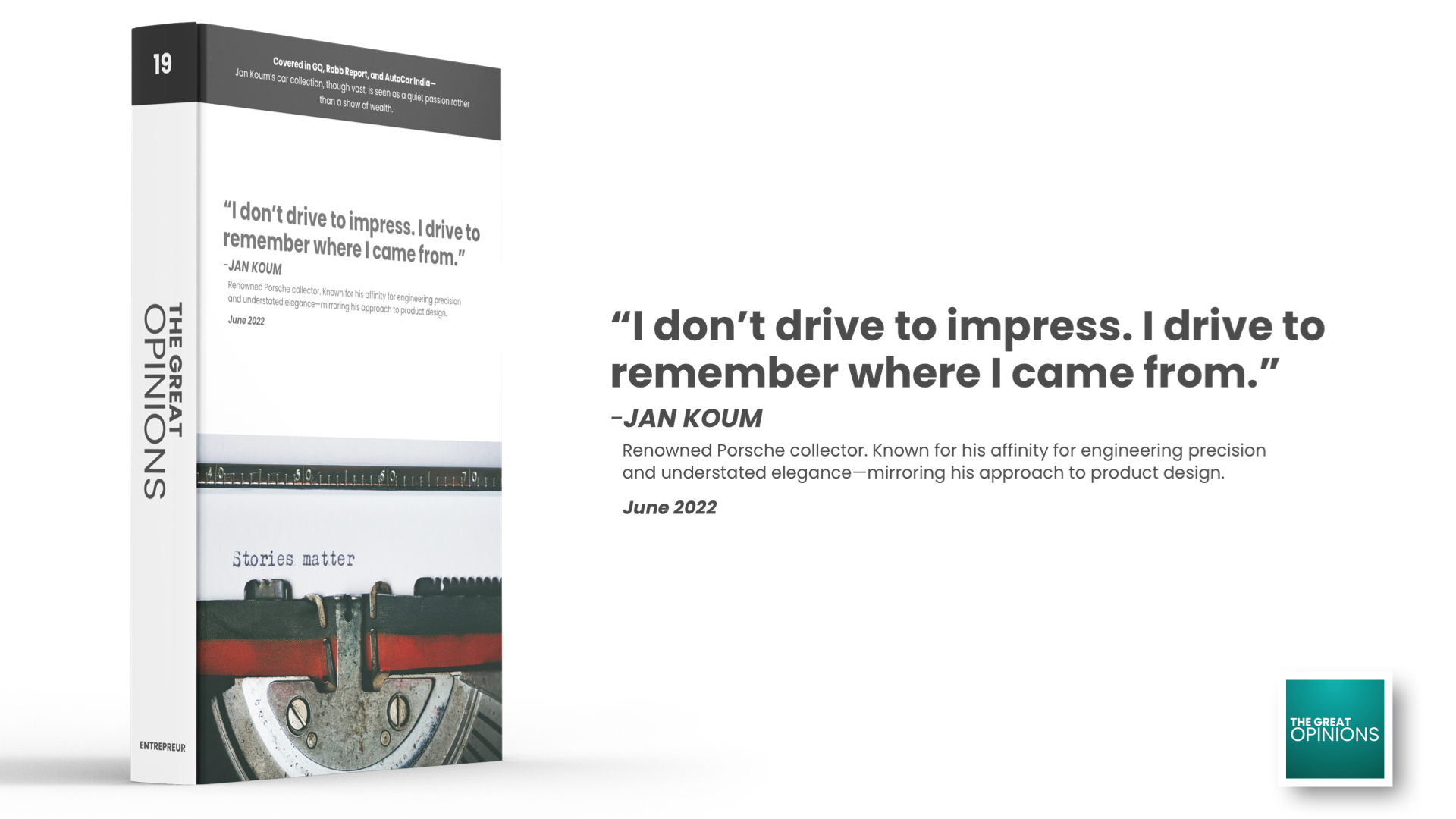The Birth of WhatsApp
Rejections That Sparked an Idea
| Topic | Details |
| Who is Jan Koum? | Ukrainian-American computer programmer and billionaire entrepreneur, best known as the co-founder and former CEO of WhatsApp Inc. |
| Birthplace | Kyiv, Ukraine (then part of the Soviet Union) |
| Immigration to USA | Moved to Mountain View, California at age 16 with his mother, lived on food stamps, and worked as a janitor to survive |
| Education | Briefly attended San Jose State University while working at Ernst & Young as a security tester |
| Career Beginnings | Worked at Yahoo for 9 years alongside Brian Acton, eventually leaving in 2007 to explore new opportunities |
| Famous Startup | Co-founded WhatsApp in 2009; grew the app with a no-ads, privacy-first ethos that set it apart from other messengers |
| Big Break | Sold WhatsApp to Facebook in 2014 for $19 billion, one of the largest tech acquisitions in history |
| Departure from Facebook | Left in 2018 over concerns related to data privacy and monetization, reportedly walking away from unvested stock worth over $1 billion |
| Philanthropy | Major donor to organizations focused on Holocaust education and digital privacy, including the FreeBSD Foundation and Signal Foundation |
| Public Image | Known for being media-shy, frugal, and deeply principled; still regarded as one of the most grounded billionaires in Silicon Valley |
| Published By | Forbes, Business Insider, The Verge, Inc. Magazine, and Wired |
| Impact & Legacy | Symbolizes the “immigrant grit” narrative — from janitor to billionaire, with a strong voice for digital rights and simplicity in technology |
There is no red carpet on the path to brilliance. For Jan Koum, the road began with barbed wire, hunger, and silence.
Born in a village on the outskirts of Kyiv, Ukraine, in 1976, Jan Koum grew up during the Soviet era, in a home that lacked both hot water and consistent electricity. His mother was a housewife, and his father worked as a laborer in construction. The only wealth his family knew was resilience. In his own words, “We grew up very poor. I got my first pair of jeans when I was 16.”
At the age of 16, Koum immigrated to Mountain View, California, with his mother. They lived in a small two-bedroom apartment, surviving on food stamps while his mother took up babysitting jobs. His father never made it out of Ukraine and died in 1997. Koum was an immigrant in a new land, speaking barely any English, and cleaning floors at a local grocery store to get by. But it was in that same grocery store that he bought used computer manuals to teach himself networking.
That decision, to learn rather than lament, would change his life.
Chapter One: Learning in Silence
Unlike most Silicon Valley legends, Koum didn’t have Ivy League credentials. He enrolled at San Jose State University while working at Ernst & Young as a security tester. He wasn’t chasing prestige; he was chasing understanding.

In 1997, his life took a new turn when he met Brian Acton while working at Yahoo. They would spend the next nine years together at the company, learning not just about systems and scalability, but about values and culture. “We knew what we didn’t want,” Koum would later say. That clarity would prove more valuable than any MBA.
Koum and Acton quit Yahoo in 2007, exhausted and disillusioned. They traveled the world for a year and applied to work at Facebook—only to be rejected. In that rejection, the seed of a billion-dollar idea began to germinate.
Chapter Two: The Message That Changed Everything
In 2009, Koum bought an iPhone. Intrigued by the App Store, he had an idea: what if people could instantly know the status of their friends through a simple app? Not the curated updates of social media, but real-time signals—“At the gym,” “In a meeting,” “On the way.”
That idea became WhatsApp.
Koum coded the first version himself. It was buggy. It crashed constantly. No one used it. But he didn’t quit. He believed. “I wanted to build something that just worked. No ads. No games. No gimmicks,” he said.
Brian Acton joined him later that year, investing $250,000 in the project. Together, they iterated and improved, sticking to their promise: No ads. No user data mining. Just connection.
Chapter Three: The Billion-Dollar Silence
By 2013, WhatsApp had over 200 million users. It had become the communication backbone for millions of people worldwide—especially in countries where SMS was expensive or unreliable.
But Koum wasn’t chasing headlines. He avoided interviews. He shunned conferences. His focus remained on product integrity. The company operated with only 50 employees. Even at that scale, WhatsApp’s user base kept doubling.
Then came the day that changed everything.
In February 2014, Facebook acquired WhatsApp for $19 billion—one of the largest tech acquisitions in history. It was the same Facebook that had once rejected him.
Koum insisted that WhatsApp would remain independent. He joined Facebook’s board but maintained his principled stance. “Respect for privacy is coded into our DNA,” he wrote in a blog post.
Chapter Four: The Exit that Spoke Volumes
In 2018, Koum left Facebook over disagreements about data privacy. His departure was quiet but principled. “I sold my users’ privacy,” he would later tell close associates. He reportedly left behind nearly $1 billion in unvested Facebook stock.
That moment cemented Koum’s legacy—not just as a billionaire, but as a builder who never sold out his values.
Today, Koum owns a significant stake in Signal, the encrypted messaging platform that champions user privacy. He has also poured millions into philanthropic causes, particularly in education and Holocaust remembrance initiatives.
Chapter Five: The Porsche Collector with a Purpose
While Koum avoids media attention, his passions sometimes peek through. One of them is cars—especially Porsches. His garage boasts a stunning collection, and he’s a known face at Porsche Club events. But even here, he’s discreet.
“There’s a part of me that’s still that Ukrainian kid who fixed his own shoes,” he said in a rare interview. The wealth never went to his head. Perhaps because the hunger never really left his heart.

Chapter Six: Legacy of a Whisper
Jan Koum’s biography isn’t a story of loud victories. It’s a tale of quiet conviction. He never built a personal brand. He built a product. He never made speeches. He built systems that spoke for him.
In a world obsessed with visibility, he chose invisibility.
But if there’s one lesson that his journey teaches, it’s this:
You don’t need to shout to be heard. You just need to solve a problem so well, people listen anyway.
Sources:
https://www.goodreturns.in/jan-koum-net-worth-and-biography-blnr188.html
https://www.cnbc.com/2017/04/24/how-whatsapp-founder-jan-koum-went-from-welfare-to-billionaire.html
https://bookipi.com/business/whatsapp-founder-jan-koum
https://tradersunion.com/persons/jan-koum
https://www.thriday.com.au/blog-posts/jan-koum-whatsapp




